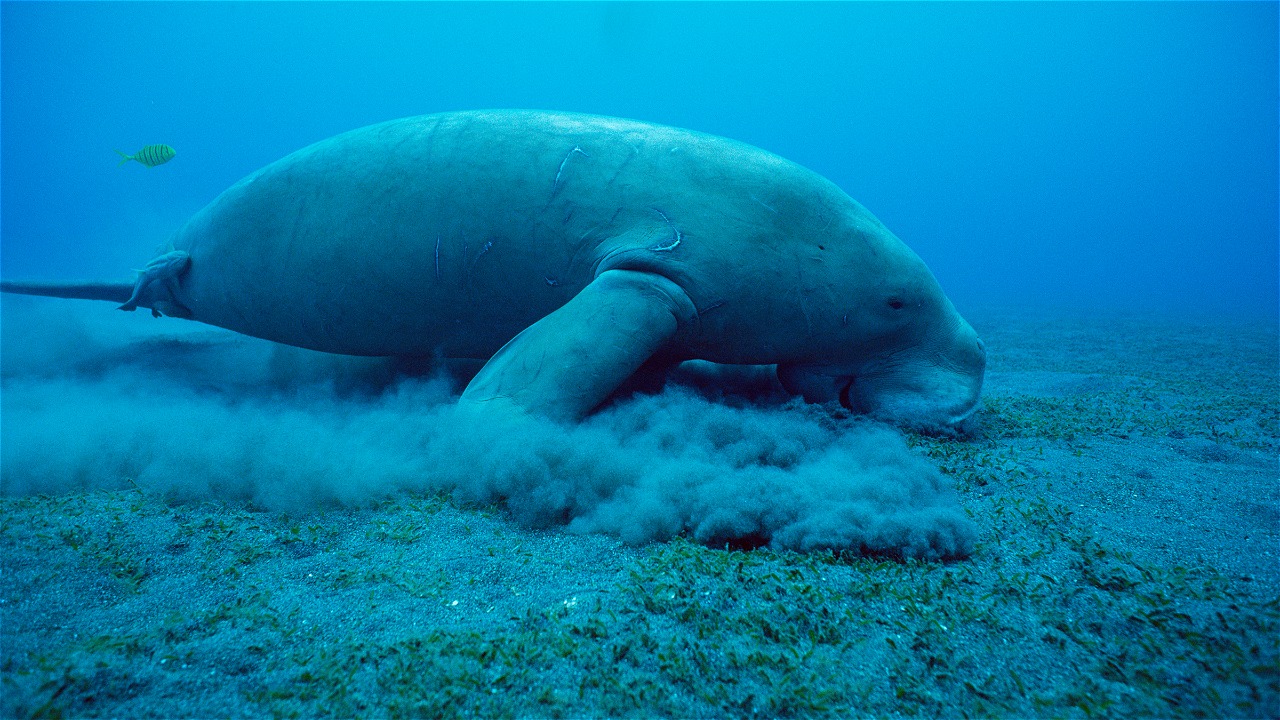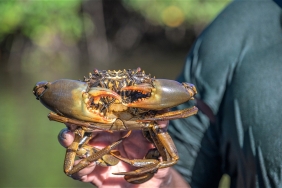THE SPIRIT OF BOGOR YOUTH FESTIVAL 2017 PARTICIPANTS TO PRESERVE DUGONGS
By: Adella Adiningtyas (Marine and Fishery Campaign and Social Media Assistant)
Curiosity about how WWF-Indonesia uses technology for conservation needs appeared on the faces of participants of the 2017 Bogor Youth Science Festival (BYSF). According to Sheyka Nugrahani Fadela, WWF-Indonesia's Marine Species Conservation Assistant, the current field situation requires modern technology to save endangered wildlife. "The tools that I brought today we use to monitor wildlife in the sea, such as sharks, turtles to dugongs", Sheyka added.
Together with 25 participants who attended the BYSF 2017 talkshow on August 11, WWF-Indonesia introduced one of the protected marine mammals in Indonesia, the Duyung (Dugong dugon). To be able to observe the activities of these shy marine mammals every day, technological aids are needed to facilitate the research process in the field, such as drones, which are unmanned aerial vehicles. Dugong surveys using drones have been conducted since last year in Alor. "The WWF-Indonesia survey team obtained important data from the results of last year's dugong survey in Alor where dugongs were caught on drone cameras interacting with swimming green turtles," Sheyka explained as the video of the dugong and green turtle interaction was played.
During the talk show, Sheyka invited participants to actively talk about the benefits of technology for the conservation of dugongs and other marine wildlife in Indonesia. Some of them apparently already knew the reason behind the extinction threat that stalks dugongs today. According to Fadli, one of the participants, the unknown population of dugongs is an important key to the need for dugongs to be preserved. This was also confirmed by Sheyka, who had been involved in the follow-up process of the results of the dugong survey in Alor, and had conducted several surveys of marine mammals in general with researchers from various agencies.< br />
In addition to drones, the technological tools commonly used by the WWF-Indonesia team in the field to observe dugongs are binoculars, cameras, Global Positioning System (GPS) to several underwater sound recorders (hydrophones) for bioacoustic analysis. To observe or conduct research on dugongs, people who understand mapping are also needed so that the distribution of dugongs can be observed. Data and information related to dugongs and seagrass beds are needed to support the implementation and enforcement of policies related to the management and protection of both marine biota, so that they are right on target. WWF-Indonesia uses aerial surveys, acoustic surveys, Geographic Information System (GIS) data analysis and database management to monitor the presence of dugongs in Indonesian waters.
At the end of the talkshow, Sheyka explained that the high level of human activities, both on land and at sea, still threatens the dugong population in Indonesia. Until now, there are still people who utilize dugongs directly for consumption or maintenance, even though dugongs have been fully protected by the government. Sheyka personally expressed her hope that the participants of BYSF 2017 can become more concerned about dugongs after knowing these facts. That way, together with technological advancements that continue to be utilized by the next generation, dugongs and the marine ecosystem as a whole can also be maintained.





